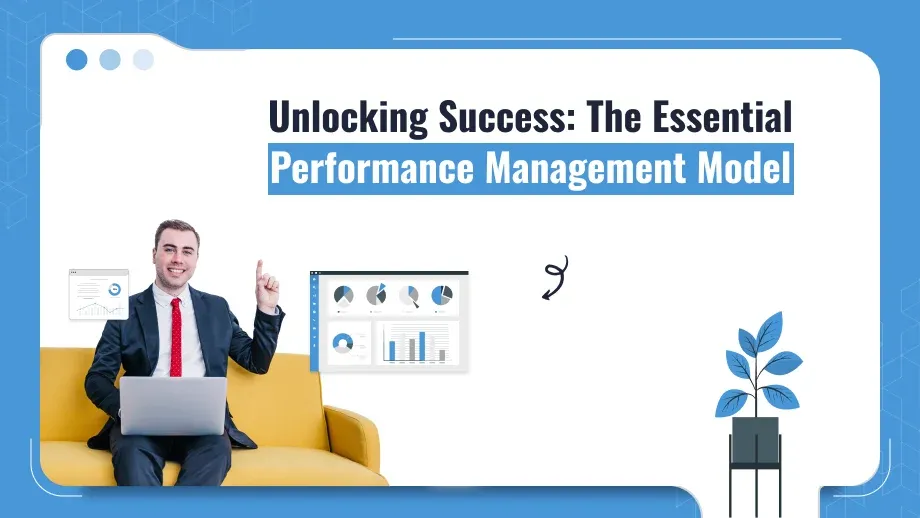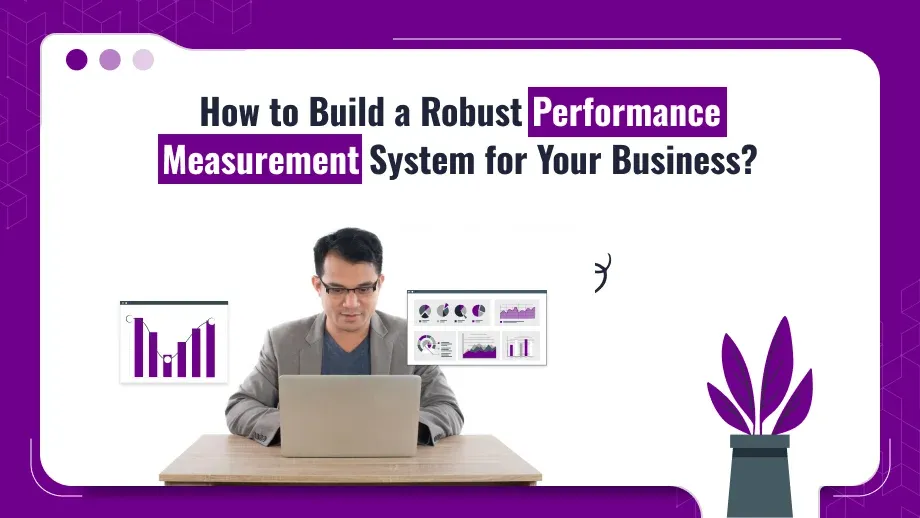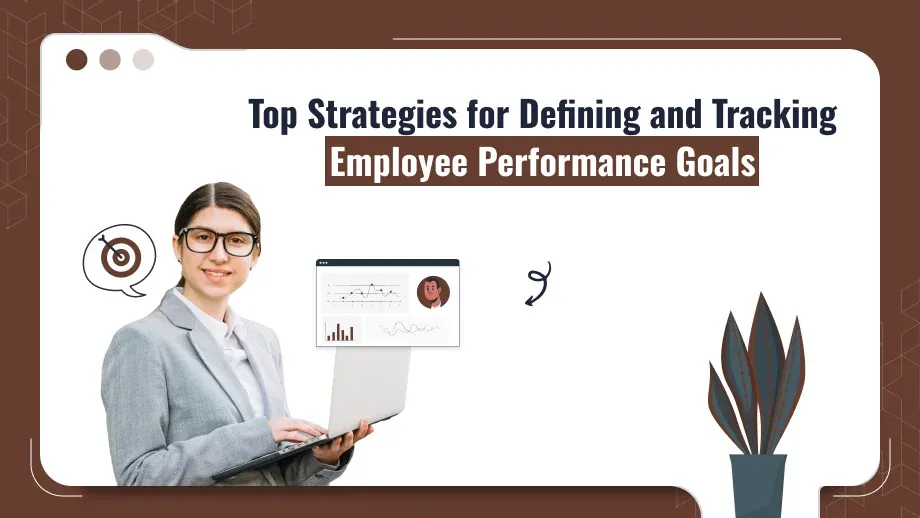
In today’s fast-paced business climate efficient performance management process is essential to achieving corporate achievement. performance management model includes a sequence of measures designed to boost employee productivity, help align personal goals with the business’s objectives and improve overall effectiveness of the organization. The following blog post will explore the value of a complete models of performance management, key components, best practices, as well as how to plan for the future of performance management. In the final article you’ll be equipped with a thorough knowledge of how to put in place an efficient performance management strategy specific to the requirements of your business.
Understanding Performance Management
Performance management is an ongoing activity that aims to improve individual and team performance in order to meet organizational objectives. This entails establishing performance standards, tracking advancement, providing feedback, and evaluating the results. Performance management encourages a culture of accountability and ongoing development while guaranteeing that workers have the support and tools they need to succeed.
The modern worker seeks more than just a job; they seek professional engagement, prospects for growth, and meaningful employment. Businesses that recognize this tendency typically create an atmosphere that inspires workers to reach their objectives and makes them feel valued.
The Importance of a Comprehensive Performance Management Model
A clearly defined performance management strategy is essential for a variety of reasons.
- Affiliation with organizational: goals The comprehensive system of performance management makes sure that the individual’s goals are aligned with the overarching objectives of the business. This aligning creates the sense of purpose and motivation for employees and motivates employees to be a part of the success of the business.
- Improved Employee Engagement: Effective managing performance can increase employee satisfaction by offering constant feedback, appreciation as well as development opportunities. People who are motivated and engaged are more productive as well as innovative and dedicated to their job.
- Better Communication: A solid system for managing performance encourages an open dialogue between employees and the managers. Check-ins regularly and feedback sessions provide an environment that is transparent, which facilitates collaboration and cooperation.
- Data-driven: decision making performance management model enables businesses to analyze and collect the performance of their employees, which allows for more an informed and educated decision making. With the help of analytics using data organizations can discover the patterns, strengths, as well as areas of improvement.
- Talent Development: An extensive plan that focuses on the development of employees by helping them improve their capabilities and skills. The investment in talent development does not just benefit the company but it also improves satisfaction with employees as well as retention.
Key Components of a Performance Management Model
To develop a highly effective model of performance management, companies must incorporate these key elements:
1. Goal Setting
Setting goals is a key element of performance management process. The organization should have quantifiable, well-defined goals that align with its long-term strategy. Setting goals that are simple to identify and quantify is aided by applying the SMART criteria (Specific Objectives, Measurable and Achievable, and Time-bound).
Example: “Increase sales revenue by 15% in the next quarter by implementing targeted marketing strategies.”
Goals set by setting them provide direction to employees. It also gives them the knowledge of what’s expected from their work. It allows employees to focus their efforts effectively and keep their focus on the their goals.
2. Continuous Feedback and Coaching
One of the most important aspects of modern-day management performance process is giving continuous feedback and training. Annual performance evaluations tend to be insufficient for encouraging the development of employees. Instead, employers should promote periodic check-ins as well as meetings for feedback, and allow the managers to continuously support their employees.
For example: managers can arrange weekly one-on-one sessions to talk about the progress made, issues as well as development possibilities.
The continuous feedback loop doesn’t just aid employees to improve their performance, and improve the rapport between team members and managers. If employees are given timely feedback, they’re able to modify their strategies and behaviors in line with the feedback, resulting in improved productivity and satisfaction with their jobs.
3. Performance Evaluation
Regular performance reviews are crucial to evaluate the overall performance of employees. Evaluations may take a range of formats, like self-assessments peer reviews, as well as formal reviews of performance. The process of evaluation must be transparent and objective with a focus on quantitative and qualitative metrics.
Examples: A performance appraisal can include measures such as the number of sales made, complete rates and feedback from your colleagues.
When conducting periodic performance assessments companies can make sure that employees meet their goals and find areas where support or additional training might be required. They also give workers with the chance to share their ambitions for their careers and needs for development with their bosses.
4. Development and Training
Insuring employee growth is an key element to the management of performance model. To help employees grow their skills and advance their careers, businesses should provide training, seminars, and mentorship programs.
Example: Implementing a leadership training program for high-potential workers to assist them prepare for future leadership positions.
Development of employees does not just improve personal performance, but it helps build stronger organization culture. If employees believe that the company is committed to their development, they are more likely to be motivated and engaged in their job.
5. Recognition and Rewards
The recognition and reward of employees for the work they do is vital to keeping motivation high and employee engagement. A properly-planned performance management strategy will include reward programs that recognize achievements by way of promotions, bonuses or even public recognition.
Example of implementing the “Employee of the Month” program that highlights outstanding achievements and accomplishments.
Recognition is a potent incentive, inspiring employees to be more efficient when they tasks. In creating the culture of gratitude, companies are able to create a thriving work environment that fosters higher productivity and satisfaction of employees.
Ready to transform your organization’s performance management?
Streamline requirements, enhance communication, and drive project success with expert analysis and strategic insights.
The Future of Performance Management
The workplace is continuing to develop and change, the future of performance management will be determined by the following trends that are emerging:
1. Emphasis on Continuous Performance Management
The old-fashioned annual performance review has become obsolete. In the future, companies will be adopting continuous management of performance practices that focus on ongoing feedback as well as live coaching. This will allow employees to modify their performances and improve quickly.
In establishing an environment that encourages a culture that is constantly improving companies can build an efficient workforce more able to respond to ever-changing business demands.
2. Integration of Technology
Technology is set to play an essential aspect in the future of management performance. Businesses will use advanced technologies that include AI (AI) or machine learning, in order to analyse the performance of employees and give them individual feedback. Software for managing performance will simplify processes and make the process more efficient and friendly for users.
As an example, AI-driven analytical tools help to determine high-performing employees, as well as those that may require assistance. This allows managers to efficiently allocate resources.
3. Focus on Employee Well-Being
Performance management in the future will more often focus on the well-being of employees. Companies will realize the fact that working-life balance have a significant impact on the performance of employees. Incorporating wellness initiatives and programs which promote employee health improve productivity as well as the satisfaction of employees.
In fostering a healthier workplace, companies will reduce the risk of burnout and increase turnover which ultimately leads to improved productivity and results.
4. Greater Inclusivity and Diversity
The future of management for performance will be centered on inclusion and diversity. Companies will adopt the process of managing performance that takes into account different perspectives and experience and ensure that employees are valued and feel included.
Teams with diverse backgrounds have been proven to be a catalyst for innovation and creative thinking and make inclusion the key factor in the success of an organization.
5. Customization and Personalization
When it comes to performance management in the area of performance management, there is no one size is not enough for everyone. Future trends will have organizations taking on processes of performance management that are custom specifically tailored to each employee’s needs. It could involve customized methods of feedback, goal-setting strategies and opportunities for development.
In recognizing that every person has their own abilities and strengths, businesses can develop a better system for managing performance that improves each employee’s and the team’s performance.
Best Practices for Implementing a Performance Management Model
For a successful implementation of the model of performance management companies should take into consideration these best practices
1. Foster a Culture of Feedback
Inspiring to create a culture of constructive feedback is crucial to ensure effective management of performance. Leaders need to model how they conduct feedback and train employees to be able to give and accept feedback in a constructive manner.
A safe and secure environment to receive feedback encourages open and honest conversations and allows employees to express their ideas and worries.
2. Leverage Technology
Incorporating performance management software helps streamline processes, increase information collection and enhance communications. Choose tools that can integrate seamlessly into existing platforms and can provide data analytics for the use of data to make decisions.
The tools are able to automate the review process, keep track of employees’ progress and provide immediate feedback. In the end, it will improve the efficiency of your assessment of performance.
3. Train Managers and Employees
It is vital to train employees for effective implementation of a management strategy. Make sure managers are equipped to facilitate effective discussions about their performance and give employees the tools to self-assess and set goals.
The ongoing training program ensures the team members remain proficient in navigating the process of managing performance effectively.
4. Measure and Adjust
Always evaluate the efficacy of your management system for performance. Gather feedback from both staff and managers, look over the performance of employees and managers, then modify the process as needed to make sure the process is relevant and efficient.
Through regular evaluation of the procedure for performance management, businesses can pinpoint areas of improvements and take data-driven actions to improve outcomes.
5. Communicate the Value
It is important to clearly communicate the goal and the benefits of the system for all employees. Making sure everyone is aware of the importance of the system will increase the participation and purchase.
Transparency and transparency in the management of performance process builds trust and a sense of commitment to employees and makes employees more inclined to participate actively in their development of performance.
Common Mistakes to Avoid When Implementing a Performance Management Model
Even having the best intentions some mistakes could lead to difficulties later in the life of the performance management system you have implemented. Below are a few common mistakes to be aware of:
1. Vague Objectives
One of the most frequently made errors is to be too vague in regards to the objectives of the project. Performance management model need to clearly define the objectives it intends to accomplish with specific and tangible objectives.
2. Unclear Scope
Undefined scopes can result in confusion and misalignment within the team. It’s essential to set the boundaries of the types of items that will be part of the process of performance management.
3. Overlooking Key Stakeholders
Failure to involve all relevant stakeholder groups when it comes to the process of evaluating performance could lead to confusion or even delays. Every stakeholder has a part to perform in that the model is successful.
4. Ignoring Risks
Processes for managing performance don’t always work completely according to the plan. In the absence of risky situations, you can make your business at risk. Recognizing risks in advance can help you reduce them before they turn into major concerns.
5. Lack of a Clear Timeline
Performance management models that don’t have defined milestones could drift away without any sense of urgency. If your timetable isn’t clearly defined the stakeholders could lose track of timelines.
6. Forgetting to Secure Formal Approval
The performance management system is not considered official until it’s been approved in writing by key participants. In the absence of this, it could cause confusion later on in the future, with those who are concerned about the authenticity of the concept.
Conclusion
The process of managing performance management model is essential to successful organizational performance. An effective model for managing performance does more than align individual goals to organizational goals, but encourages employees to be engaged, increases communication and the overall efficiency. Through focusing on constant feedback, using technology and focusing on the well-being of employees companies can set themselves up for future success of management performance.
In the midst of this transition by adjusting their methods of managing performance will be more prepared to tackle the issues that will come their way, making sure that they are competitive within an ever-changing environment. Through implementing a solid process for managing their performance management model, businesses are able to unlock the potential of their staff, resulting to sustainable growth and success.





